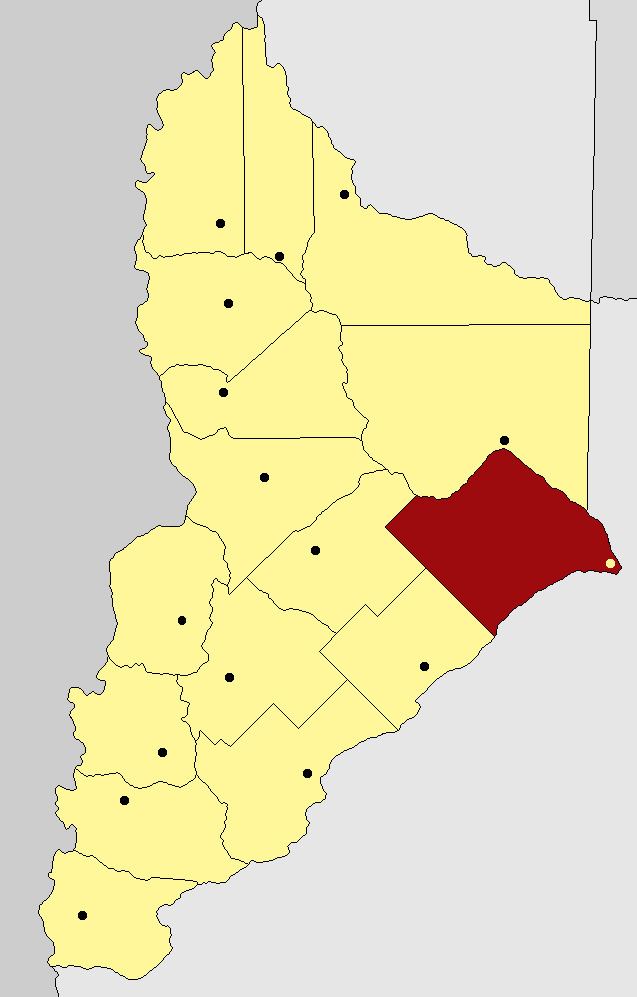Area 7,352 km² | ||
 | ||
Important cities NeuquénPlottierVilla el ChocónPlaza HuinculCutral CóSenillosaVista AlegreSausal Bonito University National University of Comahue Points of interest Museo Carmen Funes, Museo Nacional De Bellas, Gregorio Álvarez, Paseo de la Costa, Museo Paleontológico Municipal Clubs and Teams Independiente de Neuquén, Gigantes del Sur, Alianza de Cutral Có | ||
Confluencia is a department located in the east of Neuquén Province in Argentina. Neuquén, the capital city of the province, is located in this department. The department is named Confluencia after the confluence of the rivers Neuquén and Limay.
Contents
- Map of Confluencia Department NeuquC3A9n Argentina
- Geography
- Agriculture
- Electricity
- Petroleum
- Culture
- References
Map of Confluencia Department, Neuqu%C3%A9n, Argentina
Geography
The department borders on the north with Añelo Department, on the east and southeast with Rio Negro Province, on the southwest with Picún Leufú Department and with Zapala Department on the west.
Agriculture
Agriculture is one of the most important activities in the area. The major productions in the zone are apples, peaches and pears.
Electricity
In Confluencia Department there are many important power sources. In El Chocón is located El Chocón Dam, one of the most important electricity sources of the country, with Yacyretá Dam located in Misiones Province. The power generated by the dam is 222 MVA for each generator, and 180 MVA for each transformer. A new kind of production of energy used in the province, as in the department, is wind power but on a small scale.
Petroleum
In the Confluencia Department area, petroleum is extracted mostly in the El Chocón area.
Culture
In the department there are important museums located in the capital city, Neuquén, and an important paleontologic museum located in Villa el Chocón managed by Ruben Carolini, who discovered one of the most important pieces in exhibition at the museum, the Giganotosaurus carolinii in 1995.
